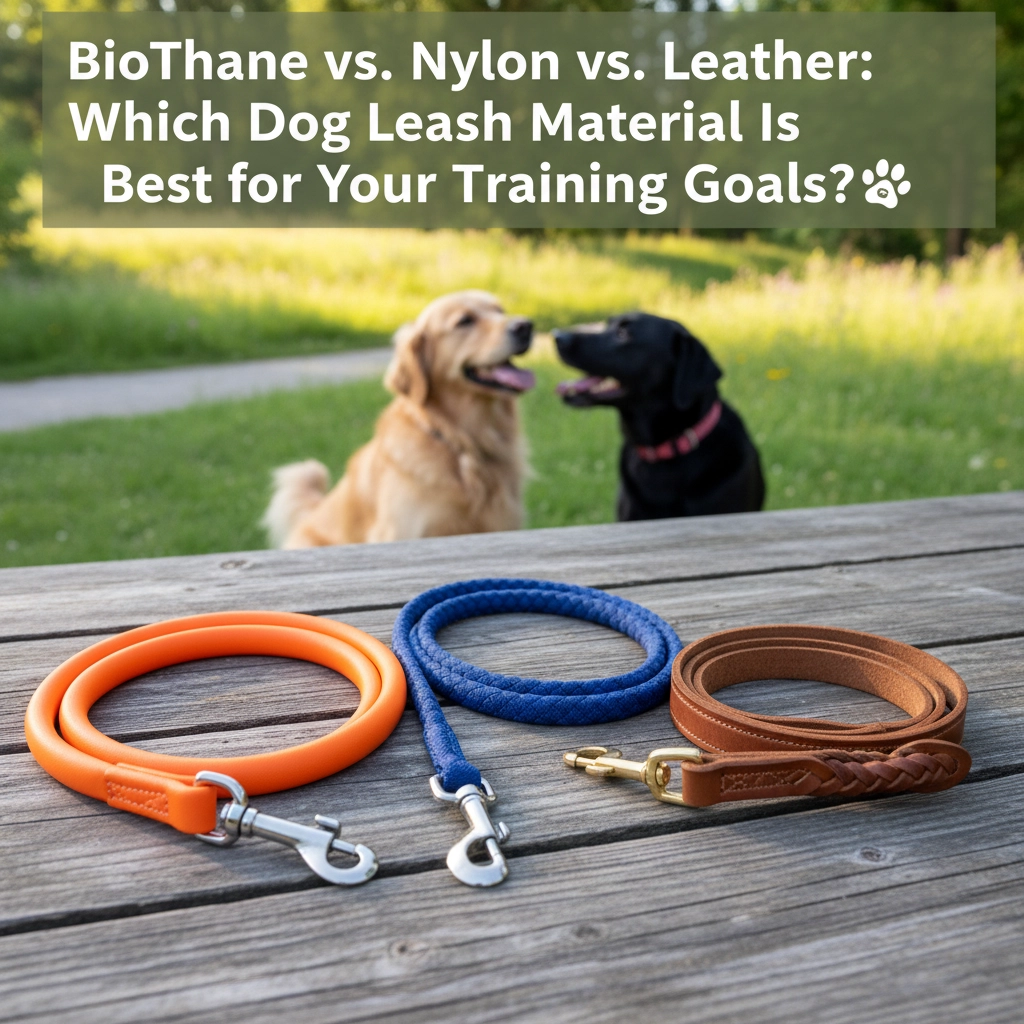
When you're investing in your dog's training equipment, the leash material you choose can make or break your training success. After years of working with handlers across all disciplines, from basic obedience to competitive dog sports, we've seen how the right material choice transforms training sessions from frustrating struggles into productive partnerships.
The three most popular leash materials each serve distinct purposes, and understanding their unique characteristics will help you make an informed decision that matches your specific training goals, environmental conditions, and budget.
BioThane: The Modern Performance Material
BioThane has revolutionized dog training equipment over the past decade, and for good reason. This synthetic material consists of polyester webbing with a leather-like coating, creating a product that combines the best aspects of traditional materials while eliminating many of their drawbacks.
Core Strengths:
- Complete waterproof protection that never absorbs moisture, odors, or bacteria
- Exceptional durability with superior resistance to wear, tear, and chewing
- Effortless maintenance requiring only soap and water for cleaning
- Consistent performance regardless of weather conditions
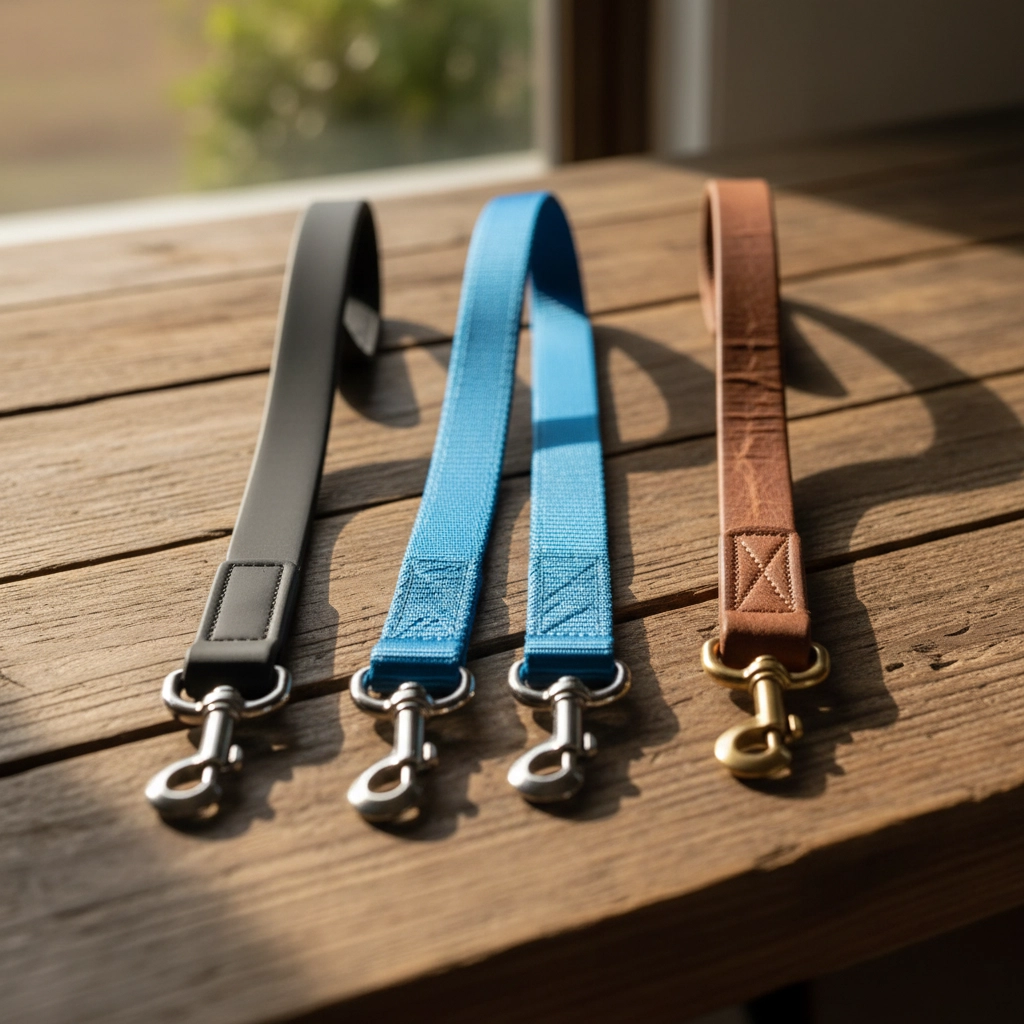
We've watched countless handlers discover the advantages of BioThane during challenging training environments. Whether you're working through morning dew, afternoon rain showers, or muddy field conditions, BioThane maintains its grip and flexibility without deterioration.
Considerations to Keep in Mind:
BioThane less stiff than leather but does feel slightly stiffer than some nylon. The material also carries a higher price point than nylon, though it typically costs less than premium leather options.
The weight difference is noticeable, BioThane feels more substantial in your hand than nylon due to its robust construction. Some handlers appreciate this heft for better control, while others prefer lighter options for extended training sessions.
Nylon: The Accessible Training Partner
Nylon leashes remain the most widely available and budget-friendly option for dog training. This synthetic material offers several practical advantages that make it particularly appealing for new handlers or those working with multiple dogs.
Core Strengths:
- Lightweight design that reduces handler fatigue during long sessions
- Superior strength-to-weight ratio providing reliable control without bulk
- Budget-friendly pricing making quality training accessible
- Vibrant color options that maintain brightness over time
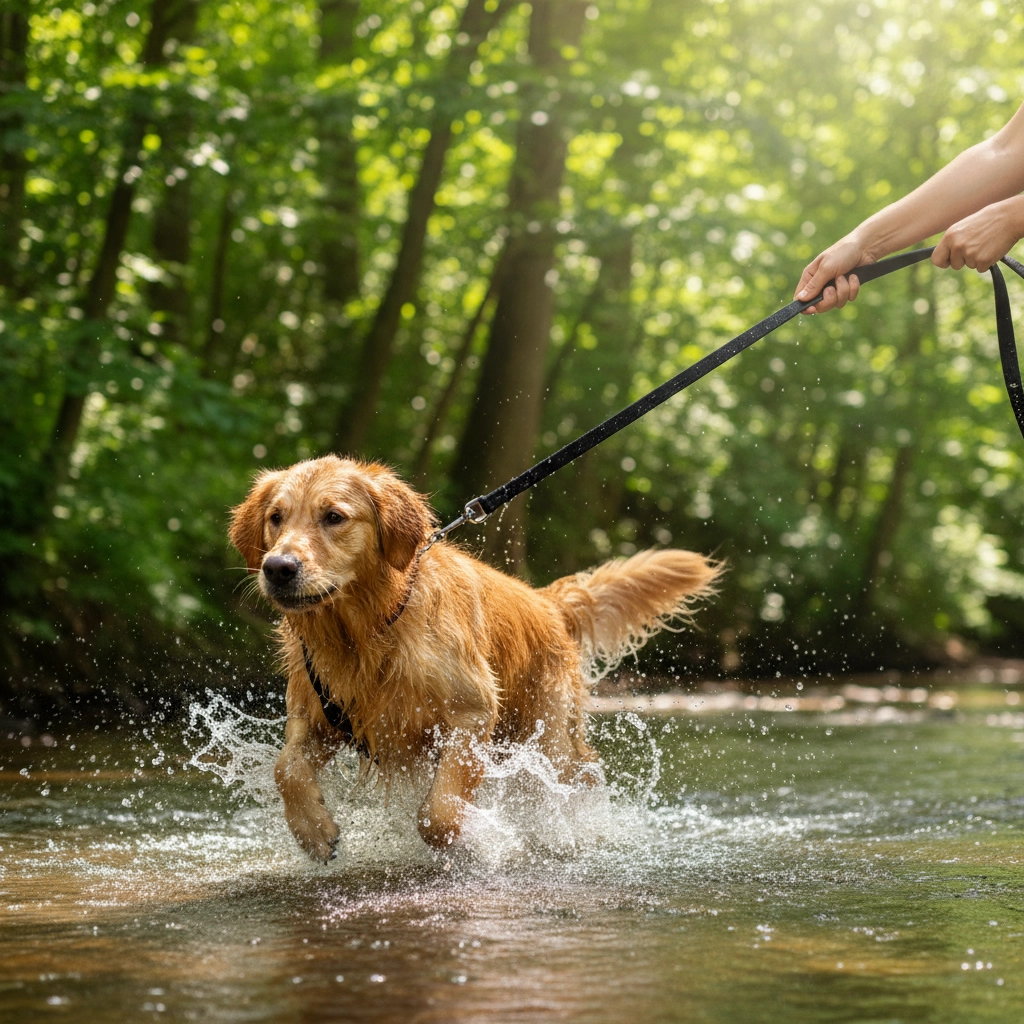
We often recommend nylon for handlers just starting their training journey. The low investment allows you to experiment with different lengths and styles while you determine your long-term preferences and needs.
Important Limitations:
Nylon's main weakness lies in its tendency to cause friction burns on your hands during strong pulling episodes. The smooth surface can slip through your grip, requiring you to hold tighter and potentially causing discomfort.
Water presents another challenge, nylon absorbs moisture, becoming heavy and slow to dry. This characteristic makes it less suitable for water-based training or frequently wet conditions. Additionally, the material may fray over time with heavy use.
Leather: The Traditional Professional Standard
Leather leashes have maintained their reputation as the professional's choice for decades, particularly among handlers working with large, powerful breeds. Quality leather develops character over time, becoming more comfortable and effective with age.
Core Strengths:
- Unmatched grip comfort that improves with use and conditioning
- Exceptional longevity lasting years with proper maintenance
- Professional appearance conveying expertise and tradition
- Superior handling during intense pulling situations
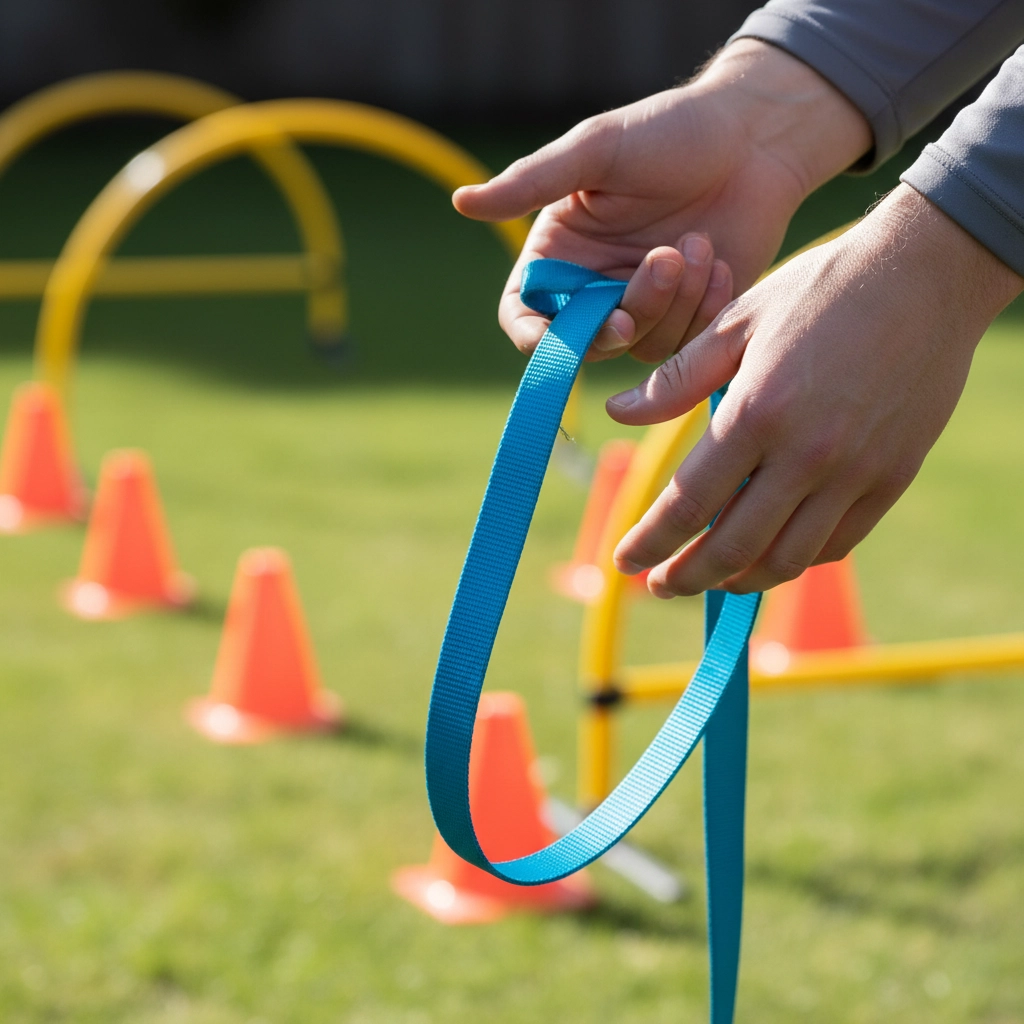
We've observed that leather leashes become true training partners over time. If well maintained, the material molds to your hand, develops the perfect amount of flexibility, and provides reliable grip.
Maintenance Requirements:
Leather demands regular attention to maintain its performance characteristics. You'll need to condition the leather periodically, clean it properly after use, and protect it from excessive moisture exposure. This maintenance requirement can be viewed as either an investment in quality or a time-consuming obligation, depending on your perspective.
The initial cost represents a significant investment, particularly for high-quality leather that will perform reliably over years of training. Water remains leather's primary enemy, repeated exposure without proper drying and conditioning leads to cracking, stiffening, and eventual failure.
Comprehensive Material Comparison
Training-Specific Recommendations
For Water-Based Training and Outdoor Sports:
BioThane excels when moisture, mud, and easy cleanup are primary concerns. We consistently recommend BioThane for dock diving, swimming training, tracking work, or any scenario where your leash will encounter wet conditions regularly. The material rinses clean instantly and maintains its performance characteristics regardless of environmental challenges.
For Agility and Flexibility-Focused Training:
Nylon's lightweight, flexible nature makes it ideal for agility courses where quick movements and minimal leash interference are crucial. The reduced weight allows for faster transitions and less fatigue during competition or extended practice sessions.
For Large Breed Training and Professional Work:
Leather remains our top recommendation for handlers working with powerful dogs requiring extended training sessions. The superior grip comfort reduces hand fatigue significantly, and the material provides reliable control even during intense pulling episodes. Professional trainers often prefer leather for its authoritative appearance and proven performance.
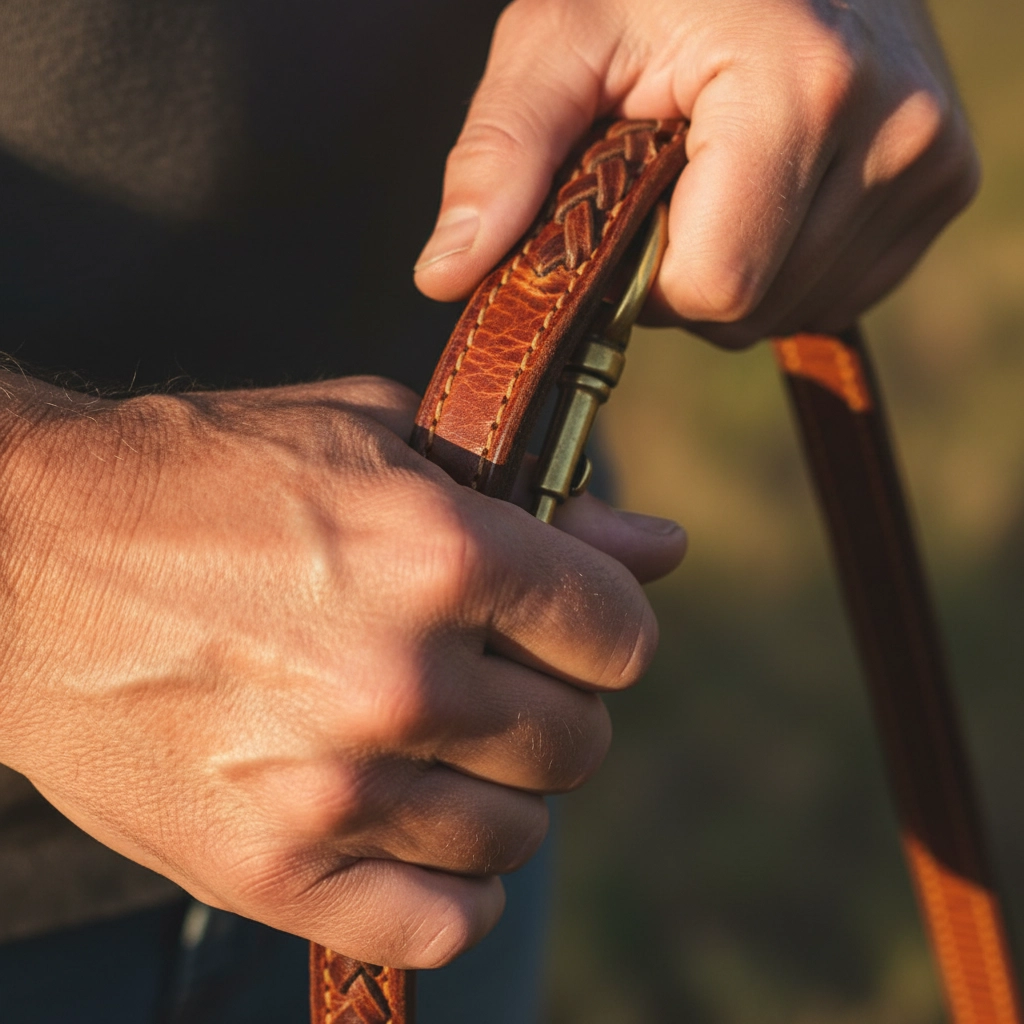
For Budget-Conscious Beginning Trainers:
Nylon offers an excellent entry point for basic obedience training while you develop your preferences and determine your long-term equipment needs. The low investment allows you to experiment with different approaches without significant financial commitment.
For All-Weather, Low-Maintenance Training:
BioThane provides the optimal balance of durability, weather resistance, and maintenance simplicity for handlers seeking reliable performance across all training environments. This "set it and forget it" approach appeals to busy handlers who want consistent equipment performance without ongoing maintenance requirements.
Making Your Final Decision
The optimal material choice ultimately depends on your specific training goals, environmental conditions, budget considerations, and personal preferences. Many experienced handlers maintain multiple leashes in different materials, matching their equipment choice to specific training scenarios and conditions.
Consider your primary training environment: if you frequently encounter wet conditions, BioThane's waterproof nature provides significant advantages. For indoor training or controlled environments, nylon's lightweight flexibility might serve you better. When working with large, powerful dogs requiring extended handling sessions, leather's superior grip comfort becomes invaluable.
We encourage you to consider your long-term training goals when making this investment. A quality BioThane leash represents excellent value for handlers committed to consistent training across various conditions and environments.
Remember that your leash serves as the critical connection between you and your dog during training. The right material choice enhances communication, improves safety, and contributes to more effective training sessions. We're always available to discuss your specific needs and help you select the ideal material and specifications for your training goals: feel free to contact us with any questions about matching equipment to your unique training requirements.
